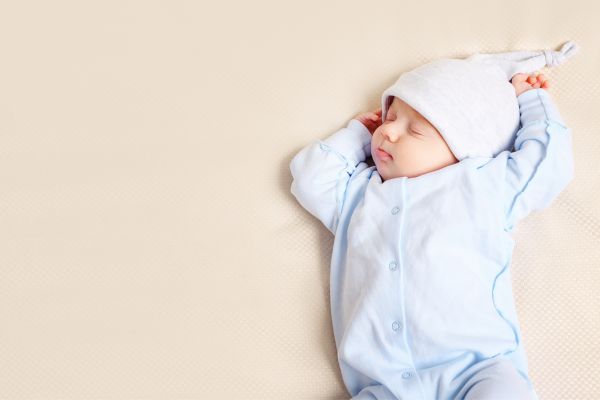As the seasons change, so do the trends in kids’ fashion. Keeping up with the ever-evolving world of seasonal kids fashion can be both exciting and daunting for parents. This article aims to serve as your go-to guide, providing insights into the latest trends, practical tips, and creative ideas to keep your little ones both stylish and comfortable, no matter the season. Mystery Find prides itself on being a one-stop destination for parents seeking stylish and comfortable clothing for their children aged 3 months to 12 years. Our website is designed with ease of navigation in mind, allowing you to quickly find exactly what you’re looking for. From cozy pajamas for bedtime stories to vibrant outfits for birthday parties, Mystery Find ensures that every piece is both kid-friendly and fashion-forward.
What’s Trending in Seasonal Kids Fashion?
Spring Splendor
- Floral Patterns and Pastel Colors: Spring fashion for kids is all about embracing the bloom of nature. Look for outfits with floral patterns, combining them with pastel shades like soft pinks, baby blues, and mint greens.
- Lightweight Fabrics: As the weather warms up, opt for breathable fabrics like cotton and linen to keep kids comfortable.
Summer Fun
- Bright and Bold Colors: Summer is the time for vibrant colors. Think neon greens, electric blues, and hot pinks.
- Sun-Protective Clothing: Look for clothes with UPF rating to protect your children’s skin from harmful UV rays.
Autumn Layers
- Earthy Tones and Textures: Autumn fashion revolves around earthy tones like browns, oranges, and deep reds. Incorporate textures like knits and corduroy.
- Layering Essentials: Transitional weather calls for layering. Think cardigans, light jackets, and scarves.
Winter Warmth
- Cozy Fabrics and Festive Colors: In winter, choose warm fabrics like wool and fleece. Incorporate festive colors like red, green, and gold.
- Functional Outerwear: Invest in quality jackets, hats, and gloves that are both fashionable and functional.
Styling Tips for Every Season
- Mix and Match: Encourage kids to mix and match pieces to create their unique style.
- Comfort is Key: Always prioritize comfort. Fashion should never come at the cost of a child’s well-being.
- Accessorize: Accessories can add a fun element to any outfit. Think funky socks, colorful hair bands, and quirky hats.
The Impact of Seasonal Changes on Children’s Clothing Needs
Seasonal changes not only influence the style but also the functionality of children’s clothing. It’s essential to adapt to the changing weather conditions to ensure kids are dressed appropriately.
How to Shop Smart for Seasonal Kids Fashion
- Plan Ahead: Keep an eye on growth spurts and plan accordingly.
- Quality Over Quantity: Invest in high-quality pieces that last longer.
- Look for Sales and Discounts: Take advantage of seasonal sales.
Historical Context of Seasonal Kids Fashion
Seasonal kids’ fashion has evolved significantly over the centuries, reflecting broader social and cultural shifts.
- Victorian Era: In the 19th century, children’s fashion mimicked adult clothing, with heavy fabrics and restricted designs, not considering the seasonal needs of children.
- Roaring Twenties: A shift towards more practical and child-friendly clothing emerged, with lighter fabrics in summer and warmer ones in winter.
- Post-War Era: The 1950s saw a boom in consumerism, and children’s fashion became more season-specific, with bright summer dresses and warm winter coats.
Step-by-Step Process of Seasonal Kids Fashion
- Design Inspiration: Designers draw inspiration from current trends, cultural motifs, and seasonal elements.
- Fabric Selection: Choosing fabrics suitable for the season, like cotton for summer and wool for winter.
- Pattern Making and Sampling: Creating patterns and samples considering children’s comfort and mobility.
- Production: Mass production of the seasonal line.
- Marketing and Distribution: Launching marketing campaigns and distributing collections to retailers.
Case Studies
Case Study 1: The Sustainable Spring Collection
A children’s fashion brand introduced a spring collection using only sustainable materials. The result was a significant rise in brand popularity and an increase in eco-conscious consumer base.
Case Study 2: Winter Wear in Scandinavia
A Scandinavian brand focused on winter wear for kids, emphasizing thermal insulation and durability. The brand’s success highlighted the importance of functionality in seasonal kids’ fashion.
Case Study 3: Back-to-School Fall Fashion
An American retailer launched a back-to-school fall collection, aligning academic and fashion calendars. This strategy led to increased sales and customer loyalty.
Benefits of Seasonal Kids Fashion
- Socio-Economic: It boosts the economy by creating jobs in design, manufacturing, and retail.
- Psychological: Season-appropriate clothing ensures children’s comfort, boosting their confidence and social interaction.
- Community-Based: Promotes cultural diversity and creativity within communities.
Impact on Socio-Economic Structure
- Economic Growth: The fashion industry, including kids’ fashion, contributes significantly to GDP.
- Employment: From designers to retail employees, seasonal fashion creates numerous job opportunities.
Challenges Faced
- Environmental Impact: The fashion industry is a major polluter, and seasonal trends can contribute to waste.
- Economic Disparities: Not all families can afford to update their children’s wardrobe every season.
- Cultural Sensitivities: Ensuring designs are culturally appropriate and respectful.
Future Outlook
In the next decade, expect to see:
- Sustainable Practices: More focus on eco-friendly materials and ethical manufacturing.
- Technology Integration: Use of AI and VR in designing and trying clothes.
- Inclusivity: More diverse and inclusive designs catering to all body types and cultural backgrounds.
FAQs
Q: How can I ensure the clothes I buy this season will last? A: Choose quality fabrics and consider buying a size larger for growing kids.
Q: Are there eco-friendly options in kids’ fashion? A: Absolutely! Look for brands that use sustainable materials and ethical manufacturing processes.
Summary
Staying on top of seasonal kids fashion involves more than just following trends. It’s about making smart choices that blend style, comfort, and practicality. As we navigate the changing seasons, let’s embrace the joy of dressing up our little ones, ensuring they not only look great but also feel great! Seasonal kids fashion reflects the dynamic interplay between cultural trends, economic factors, and technological advancements. Understanding its history, process, and impact provides a comprehensive view of its role in shaping not just wardrobes but also societal norms and economic landscapes.


